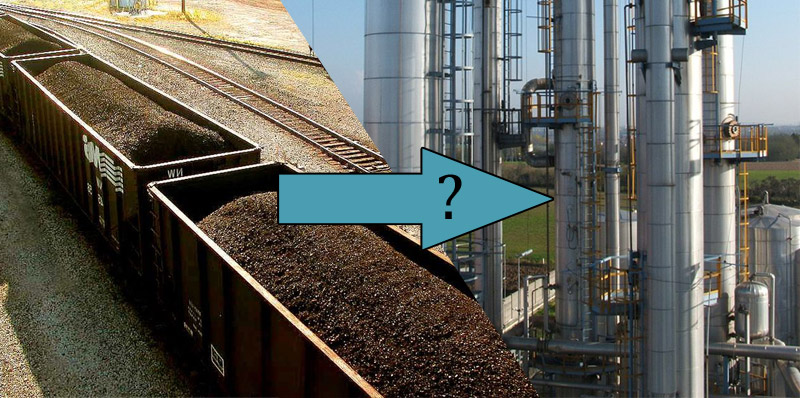There is an interesting discussion going on in the scientific literature about the amount of reduction in global warming that might occur through switching from coal to natural gas for electrical power production. The rate of leakage of methane (CH4), a more potent greenhouse gas than CO2 and the main constituent of natural gas, is an important factor in determining whether there are benefits to the switch. Hal brought up the issue of methane leakage in his January op-ed, Natural Gas: Cheap, Clean, and Risky. We now take a deeper look at this issue with the help of two recent scientific articles.
In his 2011 paper Coal to gas: the influence of methane leakage, Tom Wigley (a climate scientist at UCAR) analyzes this issue on a global scale using a climate model. He assumes that 50% of the power generated by coal in 2010 is replaced by natural gas by 2050, with the transition occurring at a linear rate. He accounts for a variety of factors other than CO2 emissions and methane leakage, including the efficiency of electrical production and the generation of aerosols. (Some aerosols, such as sulfate, actually work to counteract global warming because they scatter incoming sunlight. However, aerosols have short atmospheric lifetimes. Sulfate’s atmospheric lifetime is about a week, compared to lifetimes in the decades for CO2 and methane. Additionally, sulfate has negative environmental effects unrelated to global warming, such as the formation of acid rain and localized public health impacts.)
Wigley finds that through 2050, warming is made worse because natural gas emits less SO2 than coal, leading to the formation of fewer cooling sulfate particles. As the methane leakage rate for natural gas varies from 0% to 10%, the year in which the switch to natural gas begins to reduce global warming ranges from 2050 to 2140. Even with no methane leakage, the reduction in warming from the transition to natural gas is less than 0.15 degrees C through 2100. (As a point of comparison, the IPCC’s fourth assessment report gave a best estimate of 4.0 degrees C warming under the “high scenario” and 1.8 degrees C warming under the “low scenario” by 2100 (summary for policymakers, p. 13), and IPCC projections likely are conservative.) Wigley concludes that, irrespective of methane leakage rate, “substituting gas for coal is not an effective means for reducing the magnitude of future climate change.”
In their 2012 paper Greater focus needed on methane leakage from natural gas infrastructure, Alvarez et al. analyze the global warming effects of using compressed natural gas rather than existing vehicle fuels and replacing coal power plants with natural gas-burning plants. Their results are not directly comparable to those from Wigley because they consider only CO2 emissions and CH4 leakage rates, not other factors such as SO2 or aerosol emissions. Using the EPA’s estimated 2.4% methane leakage rate, Alvarez et al. find that replacing gasoline results in benefits after 80 years, replacing diesel results in benefits after 300 years, and replacing coal results in benefits immediately. They claim that Wigley obtained contrary results for power plants because he substantially overestimated likely SO2 emissions from coal-fired plants.
It is not yet entirely clear what magnitude of climate benefits would be obtained by switching from coal to natural gas and when those benefits would accrue. The answer depends on methane leakage rates, a factor that requires more investigation. However, it seems likely that climate benefits would be small, particularly over the short term. To achieve a positive climate future, our main focus should be on the research, development, commercialization, and deployment of clean energy and energy efficiency technologies, not large-scale construction of new natural gas plants, even if they replace coal.
Coal cars in Ohio. Photo by Decumanus. Used under Creative Commons Attribution ShareAlike 3.0 license (http://goo.gl/2oUXQ). Natural gas distillation plant. Photo by Luigi Chiesa. Used under Creative Commons Attribution 3.0 Unported license (http://goo.gl/VSZjQ).

